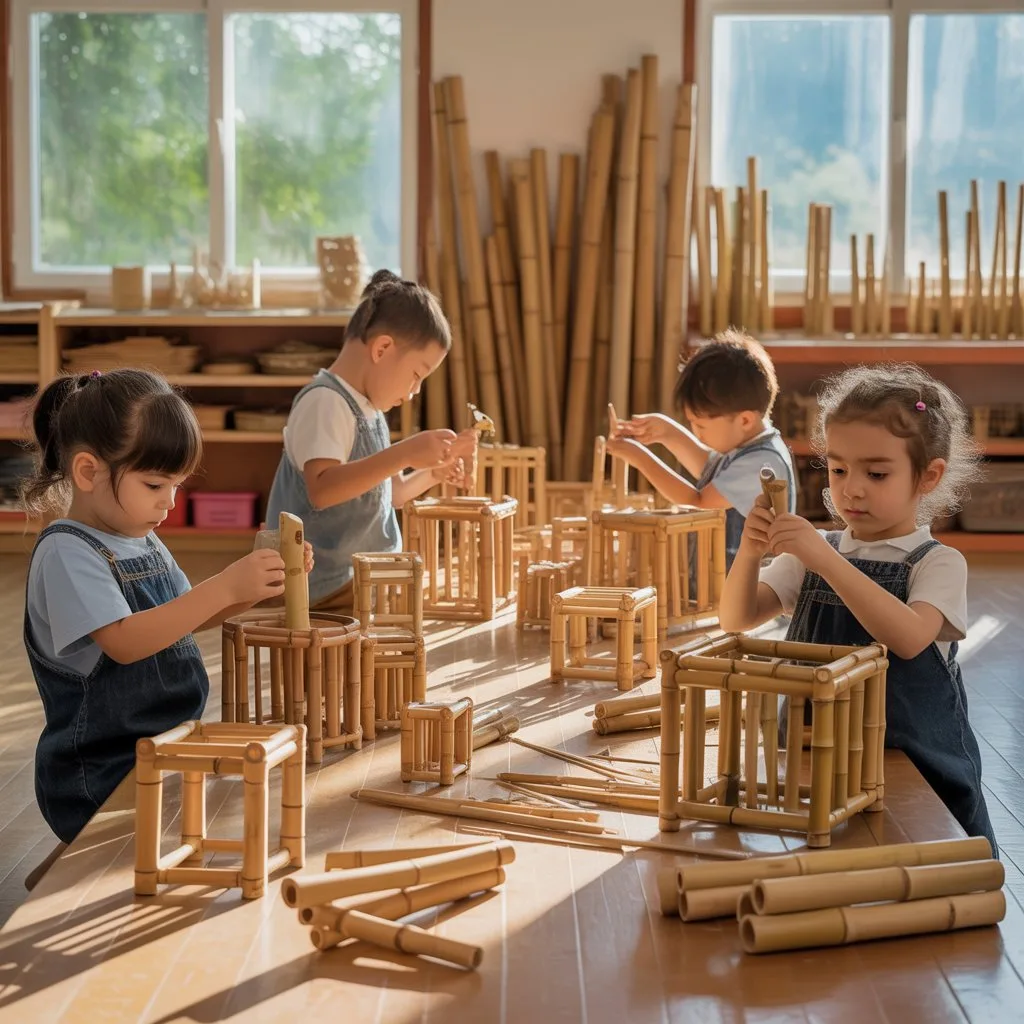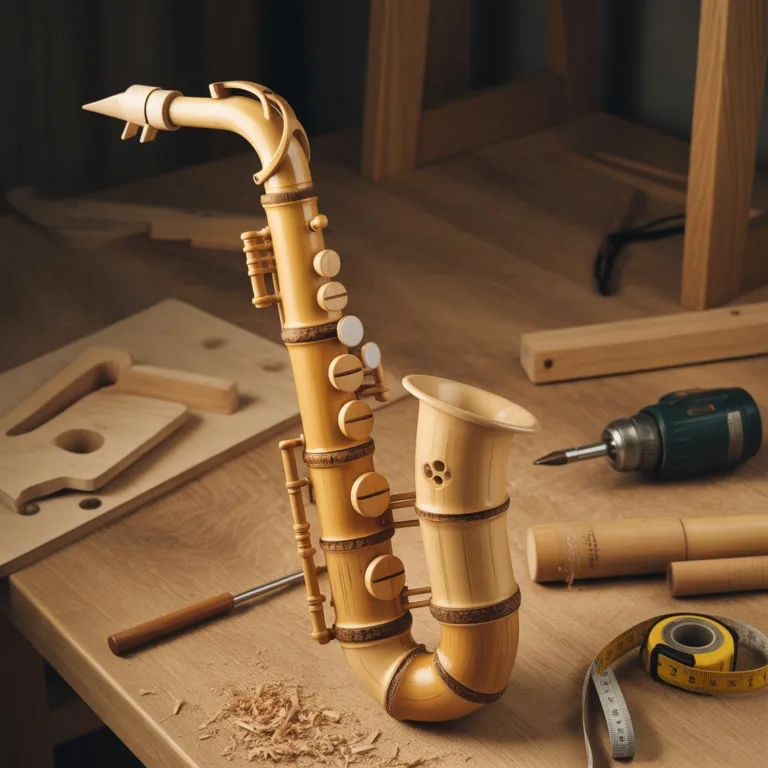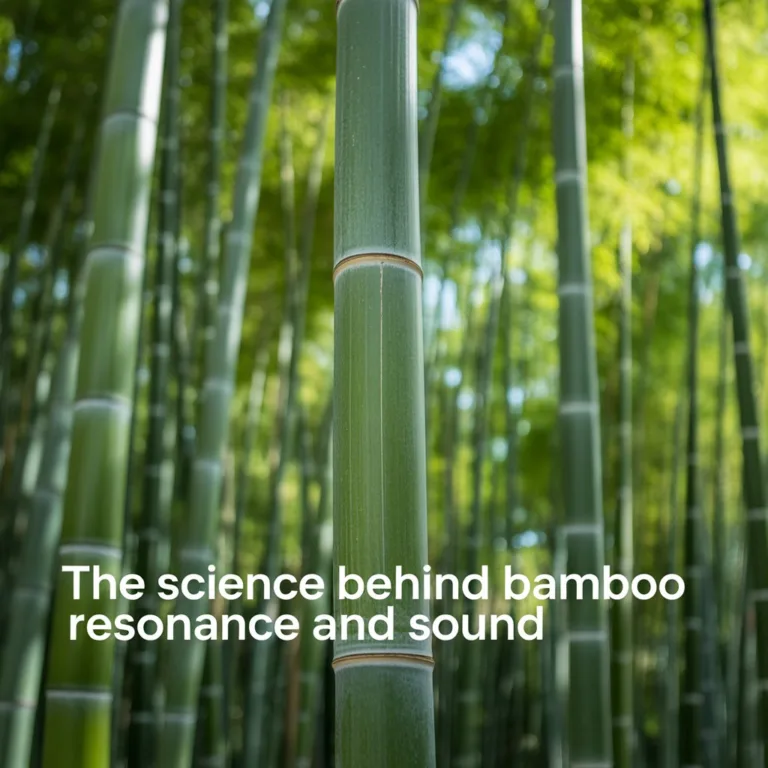Incorporating bamboo projects into classroom activities is a unique way to blend sustainability, creativity, and hands-on learning. Bamboo, a fast-growing and renewable material, provides students with a tactile experience that fosters problem-solving, teamwork, and environmental awareness. By turning bamboo into musical instruments, models, or other collaborative creations, educators can create engaging lessons that teach more than just crafting—they convey essential principles of eco-conscious living and innovation.

Why Bamboo is Perfect for Classroom Projects
Bamboo offers numerous benefits for educational use:
- Rapid Growth and Sustainability: Bamboo replenishes quickly, making it a highly renewable resource.
- Strength and Flexibility: Its durability allows students to experiment with structures and designs.
- Eco-Friendly Learning: Working with bamboo reduces reliance on plastics and other non-biodegradable materials.
- Hands-On STEM Education: Measuring, cutting, and assembling bamboo introduces concepts of geometry, physics, and engineering.
Using bamboo in classrooms merges environmental lessons with creative and technical skill development.
Planning Your Bamboo Classroom Project
A well-organized project maximizes learning and engagement:
- Define Learning Goals: Decide whether the project aims to teach sustainability, teamwork, engineering, or creativity.
- Select Materials: Gather bamboo sticks, string, glue, recycled fabric, paper, or small recycled components.
- Design the Project: Plan the type of creation—musical instruments, decorative figures, mini bridges, or models.
- Adapt to Age Group: Tailor complexity for different skill levels, ensuring safety and achievable outcomes.
Sketching project ideas beforehand encourages planning and critical thinking.
Constructing Bamboo Structures
The core of any project is the bamboo structure:
- Cut Bamboo Carefully: Measure pieces to desired lengths, smooth edges to prevent splinters.
- Assemble Components: Use twine, string, or eco-friendly glue to join bamboo pieces. Triangular or cross-bracing designs increase stability.
- Test Stability: Check that structures can withstand handling or intended weight, adjusting connections as needed.
This phase teaches students practical engineering skills and problem-solving.
Integrating Recycled Materials
Adding recycled elements reinforces sustainability lessons:
- Fabric Scraps: Add color, texture, or visual design.
- Paper or Cardboard: Strengthen structures or create patterns and shapes.
- Plastic or Bottle Caps: Include in functional or decorative components.
Encouraging experimentation with recycled materials fosters creativity and reinforces the concept of reuse.
Teaching Strategies for Effective Learning
Effective implementation ensures that lessons are absorbed:
- Explain Environmental Benefits: Discuss how reducing, reusing, and recycling impacts the planet.
- Demonstrate Techniques: Show safe methods for cutting, joining, and decorating bamboo.
- Promote Collaboration: Students work in pairs or groups, practicing communication and cooperation.
- Reflective Discussions: Ask questions about material choices, design decisions, and sustainability principles.
Blending demonstration, discussion, and hands-on work maximizes educational outcomes.
Musical Bamboo Instruments
One engaging classroom project is creating simple bamboo instruments:
- Xylophones: Cut bamboo tubes of different lengths to produce musical notes.
- Percussion Instruments: Combine bamboo sticks with recycled materials to make drums or shakers.
- Flutes and Whistles: Use hollow bamboo sections to teach sound physics and airflow.
Students learn about music, engineering, and creativity simultaneously, making lessons interactive and memorable.
Benefits for Students
Bamboo projects offer multifaceted educational advantages:
- STEM Learning: Students explore structure, measurement, balance, and physics.
- Artistic Development: Decorating and designing enhances aesthetic skills.
- Environmental Awareness: Handling sustainable materials instills eco-conscious habits.
- Problem-Solving: Challenges in construction and design encourage innovative thinking.
- Teamwork and Communication: Collaborative work strengthens interpersonal skills.
Such projects seamlessly combine technical, creative, and social learning objectives.
Workshop Ideas for Classrooms
Teachers can structure engaging sessions:
- Step-by-Step Lessons: Break down the project into design, assembly, and decoration stages.
- Group Challenges: Teams create projects collaboratively, fostering creativity and strategy.
- Integration with Curriculum: Link bamboo projects to science, art, or sustainability lessons.
- Classroom Exhibits: Display finished projects to celebrate achievements and inspire further learning.
Organized workshops create fun and impactful experiences for students.
Safety Considerations
Working with bamboo requires precautions:
- Wear gloves when cutting or sanding.
- Supervise students using scissors, saws, or adhesives.
- Secure bamboo joints properly to prevent collapse.
- Avoid toxic paints or adhesives.
Prioritizing safety ensures a positive, educational, and enjoyable experience.
Tips for Successful Classroom Projects
- Start with small, manageable designs before attempting complex creations.
- Use lightweight bamboo for younger students.
- Encourage decorative experimentation with patterns, textures, and colors.
- Promote teamwork and knowledge-sharing.
- Document projects with photos or journals to reinforce learning outcomes.
Following these tips keeps students engaged while maximizing educational impact.
Scaling Projects for Larger Groups
For whole-class or school-wide programs:
- Multiple Project Stations: Assign different design challenges to each station.
- Team-Based Assignments: Encourage collaborative problem-solving for larger projects.
- Curriculum Integration: Link activities to lessons about recycling, physics, or environmental science.
- School Exhibitions: Showcase projects to engage the wider community and promote sustainability awareness.
Scaling allows for collaborative learning and fosters school-wide environmental initiatives.
Long-Term Benefits for Students
Participants gain lasting value from bamboo projects:
- Practical Skills: Crafting, measuring, and designing enhance technical abilities.
- Environmental Responsibility: Lessons on recycling and sustainability translate into real-world habits.
- Creativity and Innovation: Students are encouraged to explore design possibilities.
- Community Awareness: Collaborative projects strengthen group dynamics and social responsibility.
Such projects leave tangible and meaningful impacts on students’ education and mindset.
Fostering Continuous Learning
Encourage students to continue practicing and experimenting:
- Try new bamboo designs at home or in extracurricular activities.
- Incorporate more recycled materials into creative projects.
- Reflect on the environmental impact of personal and classroom activities.
- Engage families and peers in sustainable DIY activities.
Sustained engagement promotes lifelong learning, creativity, and eco-conscious habits.
Closing Thoughts
Turning bamboo into harmonious classroom projects merges sustainability, creativity, and hands-on learning. Students acquire technical, artistic, and environmental knowledge, all while having fun and working collaboratively. Whether crafting musical instruments, models, or decorative structures, bamboo projects are an effective way to teach responsibility, teamwork, and innovation in a classroom setting.

Elena Mora is a creative educator and eco-craft enthusiast who specializes in bamboo musical instruments and sustainable toys for children. She believes that hands-on learning through play teaches kids about creativity, music, and environmental responsibility.



